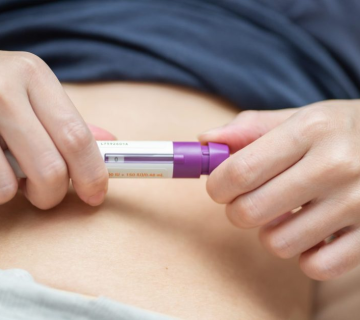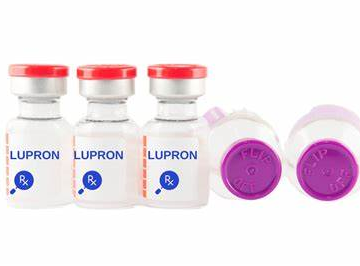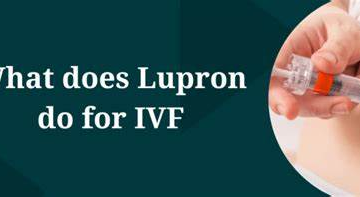
IVF After Tubal Ligation – Your Path to Parenthood Explored
If you’ve had a tubal ligation—commonly known as “getting your tubes tied”—and now you’re dreaming of having another child, you might feel like that door is closed. But here’s the good news: it’s not. In vitro fertilization (IVF) offers a way to build your family even after this permanent sterilization procedure. Whether you’re reconsidering your family size due to a new relationship, a change of heart, or simply life’s unexpected twists, IVF could be your answer.
This article dives deep into everything you need to know about IVF after tubal ligation. We’ll explore how it works, what to expect, success rates, costs, and even the latest research that might surprise you. Plus, we’ll tackle the questions you’re probably asking—things like “Can I really get pregnant again?” or “Is this worth it for me?”—with practical advice and real-world insights. Let’s walk through this journey together, step by step, so you feel informed, empowered, and ready to make the best choice for you.
What Is Tubal Ligation, and Why Does It Matter for IVF?
Tubal ligation is a surgical procedure that blocks or cuts the fallopian tubes, preventing eggs from traveling to the uterus and sperm from reaching the egg. It’s one of the most effective forms of birth control, with a failure rate of less than 1%. For many women, it’s a choice made when they’re certain their family is complete. But life changes—divorce, remarriage, or just a shift in perspective—and suddenly, that “permanent” decision feels less final.
Here’s where IVF comes in. Since tubal ligation doesn’t affect your ovaries or uterus, your body can still produce eggs and support a pregnancy. IVF bypasses the blocked tubes entirely by fertilizing your eggs outside your body and placing the embryo directly into your uterus. It’s like giving nature a little detour around the roadblock.
Key Facts About Tubal Ligation and IVF
- Tubal ligation doesn’t stop egg production. Your ovaries keep working; the eggs just can’t reach the uterus naturally.
- IVF skips the fallopian tubes. It’s a direct solution for women with blocked or removed tubes.
- It’s not a reversal. Unlike tubal ligation reversal surgery, IVF doesn’t try to fix the tubes—it works around them.
Think of it this way: if your tubes are like a locked gate, IVF is the helicopter that flies right over it. But how does this process actually unfold? Let’s break it down.
How Does IVF Work After Tubal Ligation?
IVF might sound complicated, but it’s a well-established process that’s helped millions of people become parents. Here’s a simple rundown of what happens when you choose IVF after tubal ligation.
Step-by-Step Guide to IVF
- Ovarian Stimulation
You’ll take hormone injections for about 10-14 days to encourage your ovaries to produce multiple eggs. Normally, you release one egg a month, but IVF boosts that number to increase your chances. - Egg Retrieval
Once your eggs are ready, a doctor uses a thin needle (guided by ultrasound) to collect them from your ovaries. It’s a quick procedure—about 20 minutes—done under light sedation, so you won’t feel much. - Fertilization
In a lab, your eggs are mixed with sperm (from your partner or a donor). Scientists watch as fertilization happens, creating embryos. This is where the magic starts! - Embryo Development
The embryos grow in the lab for 3-5 days. Experts monitor them to pick the healthiest ones for transfer. - Embryo Transfer
A doctor places one or two embryos into your uterus using a thin tube. It’s painless and takes just a few minutes. About two weeks later, you’ll take a pregnancy test. - Waiting and Support
After the transfer, you might take progesterone (a hormone) to help your uterus support the pregnancy. Then, it’s a waiting game to see if the embryo implants.
Why It Works Post-Tubal Ligation
Since your fallopian tubes aren’t needed for IVF, their blockage doesn’t matter. Your ovaries and uterus are the stars of the show here. As long as they’re healthy, IVF can succeed.
✔️ Pro Tip: Ask your doctor for an ultrasound or hormone test to check your ovarian reserve (how many eggs you have left) before starting. It’s a key predictor of success.
❌ Common Myth: “IVF won’t work because my tubes are tied.” Nope! The tubes being blocked is exactly why IVF is perfect for you.
Can You Get Pregnant After Tubal Ligation Without IVF?
This is a big question for many women. Technically, yes, there are other options, but they come with trade-offs. Let’s compare them to IVF so you can see what fits your life best.
Option 1: Tubal Ligation Reversal
- What It Is: Surgery to reconnect your fallopian tubes.
- Pros: Allows natural conception; often cheaper upfront ($5,000-$10,000).
- Cons: Not guaranteed to work (success depends on age, tube damage, and scarring); higher risk of ectopic pregnancy (when the embryo implants in the tube).
- Success Rate: 40-70%, depending on factors like how the ligation was done.
Option 2: IVF
- What It Is: Fertilization outside the body, bypassing the tubes.
- Pros: Higher success per cycle; no surgery needed; lower ectopic pregnancy risk.
- Cons: More expensive ($12,000-$20,000 per cycle); involves hormones and procedures.
- Success Rate: 20-40% per cycle, depending on age and health.
Which Is Better?
It depends. If you’re younger (under 35) and your tubes were tied with clips or rings (not cut or burned), reversal might be worth exploring. But if you’re older or want a faster, more controlled process, IVF often wins out. Orion Nightingale, a fertility specialist, says, “IVF gives women more predictability after tubal ligation, especially if time is a factor.”
What Are the Success Rates for IVF After Tubal Ligation?
Success rates are a huge concern—and rightfully so. You want to know your odds before investing time, money, and hope. The good news? IVF success after tubal ligation is similar to IVF for other infertility issues. It all boils down to a few key factors.
Success Rates by Age (2023 Data)
| Age Group | Live Birth Rate per IVF Cycle |
|---|---|
| Under 35 | 40-45% |
| 35-37 | 30-35% |
| 38-40 | 20-25% |
| Over 40 | 10-15% |
Source: Latest CDC Fertility Clinic Success Rates Report
What Boosts Your Chances?
- Age: Younger women have more and healthier eggs.
- Ovarian Reserve: A higher egg count (measured by AMH levels) means better odds.
- Uterine Health: A welcoming uterus free of fibroids or scarring helps embryos implant.
- Lifestyle: Normal weight, no smoking, and low stress can improve outcomes.
Real Talk: It Might Take More Than One Cycle
About 60% of women need multiple IVF cycles to conceive. For example, Lisa, a 38-year-old with a tubal ligation, tried IVF twice. The first cycle didn’t work, but the second gave her a healthy baby girl. Patience can pay off.
✔️ Action Step: Track your cycle and health habits months before IVF to optimize your body.
❌ Don’t Assume: “One cycle will do it.” Plan for the possibility of two or three tries.
How Much Does IVF Cost After Tubal Ligation?
Money matters, and IVF isn’t cheap. Let’s break down the costs and explore ways to make it more affordable.
Average Costs in the U.S. (2025 Estimates)
- One IVF Cycle: $12,000-$15,000 (without medication)
- Medications: $3,000-$5,000 per cycle
- Additional Fees: $1,000-$3,000 (testing, embryo freezing, etc.)
- Total per Cycle: $15,000-$23,000
Hidden Costs to Watch For
- Travel to a clinic (if you’re rural)
- Time off work for appointments
- Emotional support (therapy or counseling)
Ways to Save
- Insurance: Some states (like New York or Illinois) mandate partial IVF coverage. Check your policy!
- Clinics with Packages: Look for multi-cycle discounts (e.g., $25,000 for 3 cycles).
- Grants: Organizations like Baby Quest offer financial aid for IVF.
- Financing: Many clinics partner with lenders for payment plans.
Ophelia, a reproductive health counselor, notes, “Cost is a barrier, but creative planning—like choosing a clinic with a refund program if you don’t conceive—can ease the burden.”
What Are the Risks and Side Effects of IVF?
No medical process is risk-free, and IVF is no exception. Knowing what might happen helps you prepare.
Common Side Effects
- Bloating and Cramping: From hormone shots.
- Mood Swings: Hormones can feel like an emotional rollercoaster.
- Bruising: From injections or retrieval.
Rare but Serious Risks
- Ovarian Hyperstimulation Syndrome (OHSS): Overstimulated ovaries can swell (affects 1-5% of patients).
- Multiple Pregnancies: Twins or more (10-20% chance with two embryos transferred).
- Ectopic Pregnancy: Very rare with IVF, but still possible (less than 2%).
✔️ Safety Tip: Choose a clinic with a low OHSS rate and discuss single-embryo transfer to avoid multiples.
❌ Don’t Ignore: Persistent pain or heavy bleeding—call your doctor ASAP.
Latest Research on IVF After Tubal Ligation
Science is always moving forward, and recent studies offer fresh insights that could shape your IVF journey.
2024 Breakthroughs
- Embryo Selection Tech: A new AI tool analyzes embryo quality with 85% accuracy, up from 70% in older methods. This could boost success rates by picking the best candidates.
- Lower Hormone Doses: A 2024 study found that “mini-IVF” (using fewer drugs) works well for women over 35 with tubal ligation, cutting costs and side effects.
- Fertility Preservation Link: Research shows women who froze eggs before tubal ligation have a 10% higher success rate with IVF later.
What This Means for You
These advances suggest IVF is getting smarter, cheaper, and gentler. If you’re on the fence, waiting a year for more clinics to adopt these methods might be worth it.
Practical Tips for IVF Success After Tubal Ligation
Ready to take the plunge? Here’s how to stack the deck in your favor.
Before You Start
- Get a Full Checkup: Test your ovarian reserve, hormone levels, and uterus health.
- Pick the Right Clinic: Look for high success rates and experience with post-ligation cases.
- Build a Support Team: Line up a partner, friend, or therapist to cheer you on.
During IVF
- Follow Meds to a T: Timing matters with hormone shots—set alarms!
- Rest Smart: Take it easy after retrieval and transfer, but don’t overdo bed rest.
- Eat Well: Load up on protein, healthy fats, and leafy greens to fuel your body.
After Transfer
- Stay Busy: Avoid obsessing over symptoms—light hobbies help.
- Test Wisely: Wait for the official blood test; home tests can mislead early on.
Caspian Sterling, an IVF researcher, advises, “Preparation is half the battle. A healthy body and calm mind can tip the scales toward success.”
Emotional Side of IVF After Tubal Ligation
IVF isn’t just physical—it’s an emotional marathon. After tubal ligation, you might wrestle with guilt (“Did I make the wrong choice?”) or fear (“What if this fails?”). That’s normal.
Coping Strategies
- Talk It Out: Join a support group (online or local) for women in your shoes.
- Set Small Goals: Celebrate each step—egg retrieval, transfer—like mini victories.
- Be Kind to Yourself: It’s okay to feel up and down; give yourself grace.
For Sarah, a 42-year-old mom, IVF after ligation was “a wild ride of hope and doubt.” Her son, born after three cycles, made every tear worth it.
IVF vs. Adoption: Another Path to Consider
IVF isn’t the only way to grow your family. Adoption is a beautiful option, too. Here’s a quick comparison:
| Factor | IVF After Tubal Ligation | Adoption |
|---|---|---|
| Cost | $15,000-$23,000/cycle | $20,000-$50,000 |
| Time | 2-6 months per cycle | 1-3 years |
| Certainty | 20-45% success rate | Guaranteed child |
| Experience | Biological pregnancy | No pregnancy |
Both paths take courage. IVF offers a biological connection, while adoption brings a child already waiting for love. Which feels right for you?
Your Next Steps: Making IVF Work for You
By now, you’ve got the full picture—how IVF works after tubal ligation, what it costs, and what it takes to succeed. So, what’s next?
Action Plan
- Research Clinics: Look up local options and read reviews.
- Talk to a Doctor: Schedule a consult to discuss your specific case.
- Crunch Numbers: Map out your budget and explore funding.
- Lean In: Surround yourself with support as you start.
Let’s Chat!
What’s on your mind? Are you excited, nervous, or just curious? Drop a comment below—I’d love to hear your story or answer your questions. Maybe you’ve already done IVF after tubal ligation—what tips would you share? Let’s keep this conversation going!



